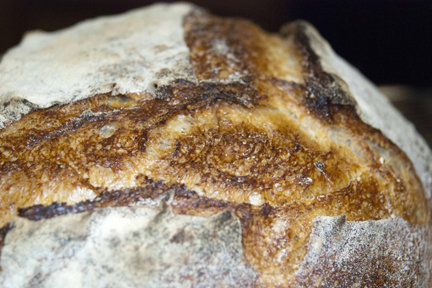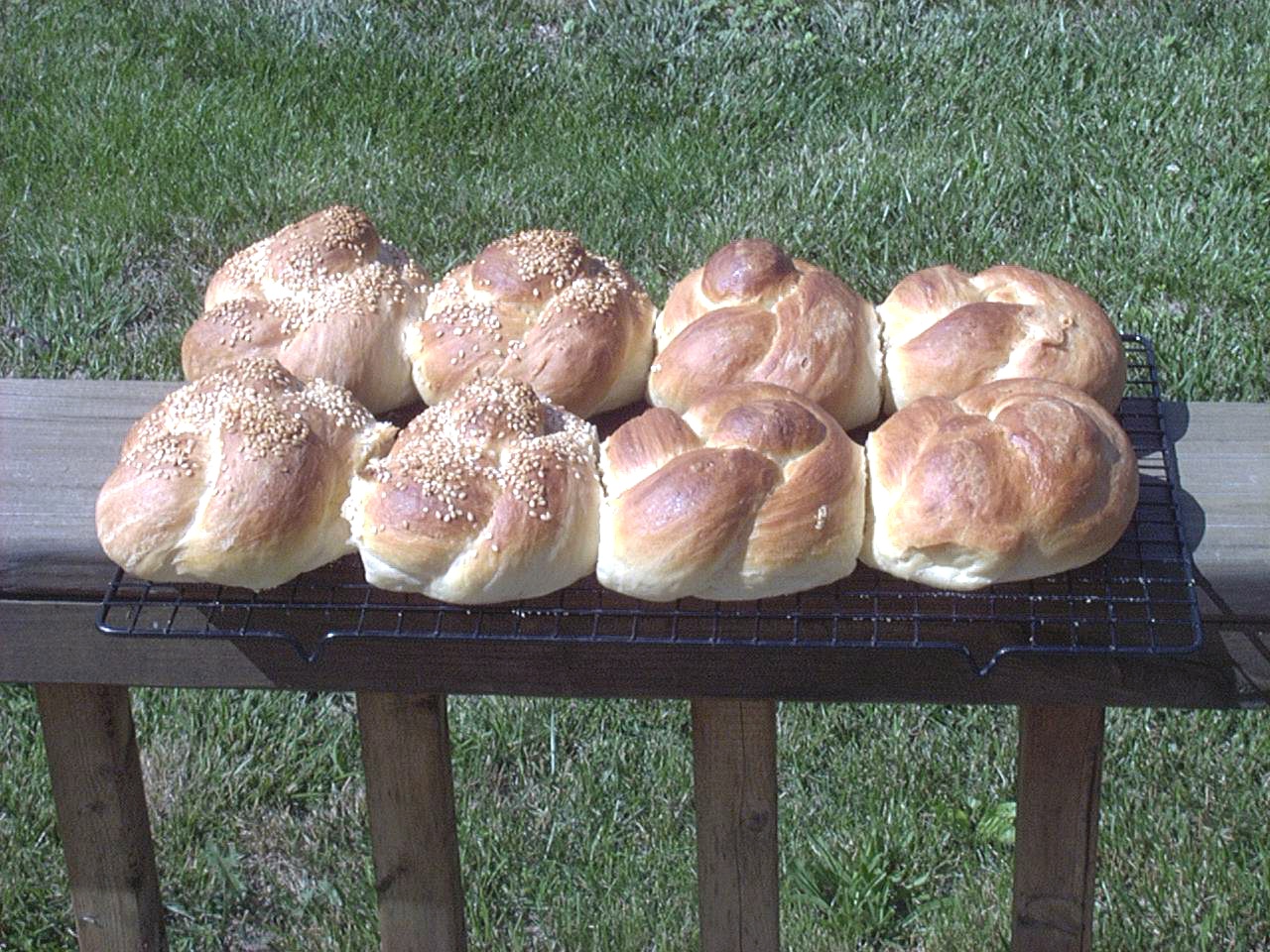The only way for me to make any relivent decisions about how best to use my new combo cooker is to bake the same basic formula repetedly, making procedural changes and noting the change in outcomes. So, this bake is another in a series of the Basic Country Bread from Tartine. I did make one small change in the formula to suit my personal prefrence in flavor. I really like the flavor of a French style bread with around 5% rye in an otherwise white bread flour mix. When you get the ferment right there is a great nutty after taste that is IMHO the essence of that great full flavor French bread.
My levain was made from 50g of AP and 50g of whole rye mixed with 100g of warm water. Left to ferment at 78F for 12 hours, it had a fruity fragrance and had just peaked I believe.
The dough was made with 950g of bread flour, 50g of whole rye, 700+50g of warm (80f) water and 22g of salt. The salt number is a reflection of taking into account the 100g of flour in the levain which Robertson forgot about.
I have been adding the salt to the last 50g of warm water but honestly, I find it hard to get it all out of the cup when I dump the water in as it isn't completely dissolved. I think I'm going to go back to adding the salt dry and pouring the water in over it.
The stretching and folding has become more relaxed as I get more comfortable with this process. I mix the dough well with my fingers cutting the last 50g of water and salt in. It looks and feels like I'm damaging the strands as the dough becomes a disorganized and chopped up mess. But 30-40 minutes when I do the first stretch, the dough has become connected and cohesive as a mass. I have been trying to stretch and fold in the container every 30-40 minutes with the exception that at 4 hours of fermenting when the dough is well aerated, I pour it out on a lightly oiled counter and do a standard tri fold both directions. I think the letter fold is less damaging to the structure and it gives me a chance to give it a good stretch and feel the development. Then after another 30 minutes or so, I divide and shape using a linen lined dusted basket.
The suggestion of the author is to pre heat the cast iron cooker at 500F. The oven is set at 450F after loading the dough. While it may be easier to load the dough in a cold cooker, I have found I like the crust and spring better using Robertsons suggestion of preheating. The change I made to the suggested procedure this time was to shorten the amount of time the top is on and baking covered. Robertson says 20 minutes covered and 20-25 minutes open baking at 450. My bakes have produced thin crusts using those times. This time I removed the cover at 15 minutes and for the second loaf, 12 minutes and open for 25 and 28 minutes respectively. At the end of the bake I opened the door a crack to help dry out the crust some.
My conclusion is that the 20 minutes of covered baking is to long for this high hydration dough. The crust is so thin and soft after the bread has cooled, slicing is difficult. You can see in my image taken when I removed the cover at 12 minutes, the dough is just starting to take on color and has started forming a crust after expanding. The crust then is more substantial having been exposed to dry heat for a longer time, making a crust that is still crisp in the morning after baking.
The oven spring was so great that the dough crested in the top of the cooker. You can see the flour marks in the cover where the top of the loaf kissed the iron top. Remarkable spring if I do say so.
My next effort will be to make a similar sized loaf but at a lower hydration.
Eric



Uncovered after 12 minutes. The spring hit the cover!



This is what it's all about. Just perfect!

